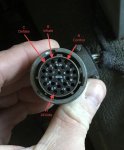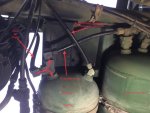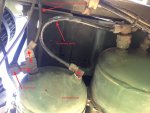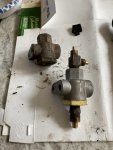Seapup
Member
- 46
- 83
- 18
- Location
- Washington
Just had twin LMTV’s delivered yesterday,
After sorting through a couple issues, ( well Ok a lot of issues) both were non op, got both running, in short, rebuilt one cab latch a couple grumpy air valves, sorted through completely FUBARed relay Panels.
Subbed in two group 31 batteries.
all is well, both are now running
Except, one will not build air pressure,
Any help trouble shooting these systems very much appreciated.
Where to start/ common points of failure/ cures to said common failures .
I plan on starting at compressor checking for air pressure and then working my way down stream.
Where do I check for pressure and how much pressure should be coming out of a healthy compressor?
Thanks in advance
bonus question,
One twin came without a CTIS controller and was wondering if there was a way to inflate tires without a controller on board?
After sorting through a couple issues, ( well Ok a lot of issues) both were non op, got both running, in short, rebuilt one cab latch a couple grumpy air valves, sorted through completely FUBARed relay Panels.
Subbed in two group 31 batteries.
all is well, both are now running
Except, one will not build air pressure,
Any help trouble shooting these systems very much appreciated.
Where to start/ common points of failure/ cures to said common failures .
I plan on starting at compressor checking for air pressure and then working my way down stream.
Where do I check for pressure and how much pressure should be coming out of a healthy compressor?
Thanks in advance
bonus question,
One twin came without a CTIS controller and was wondering if there was a way to inflate tires without a controller on board?






